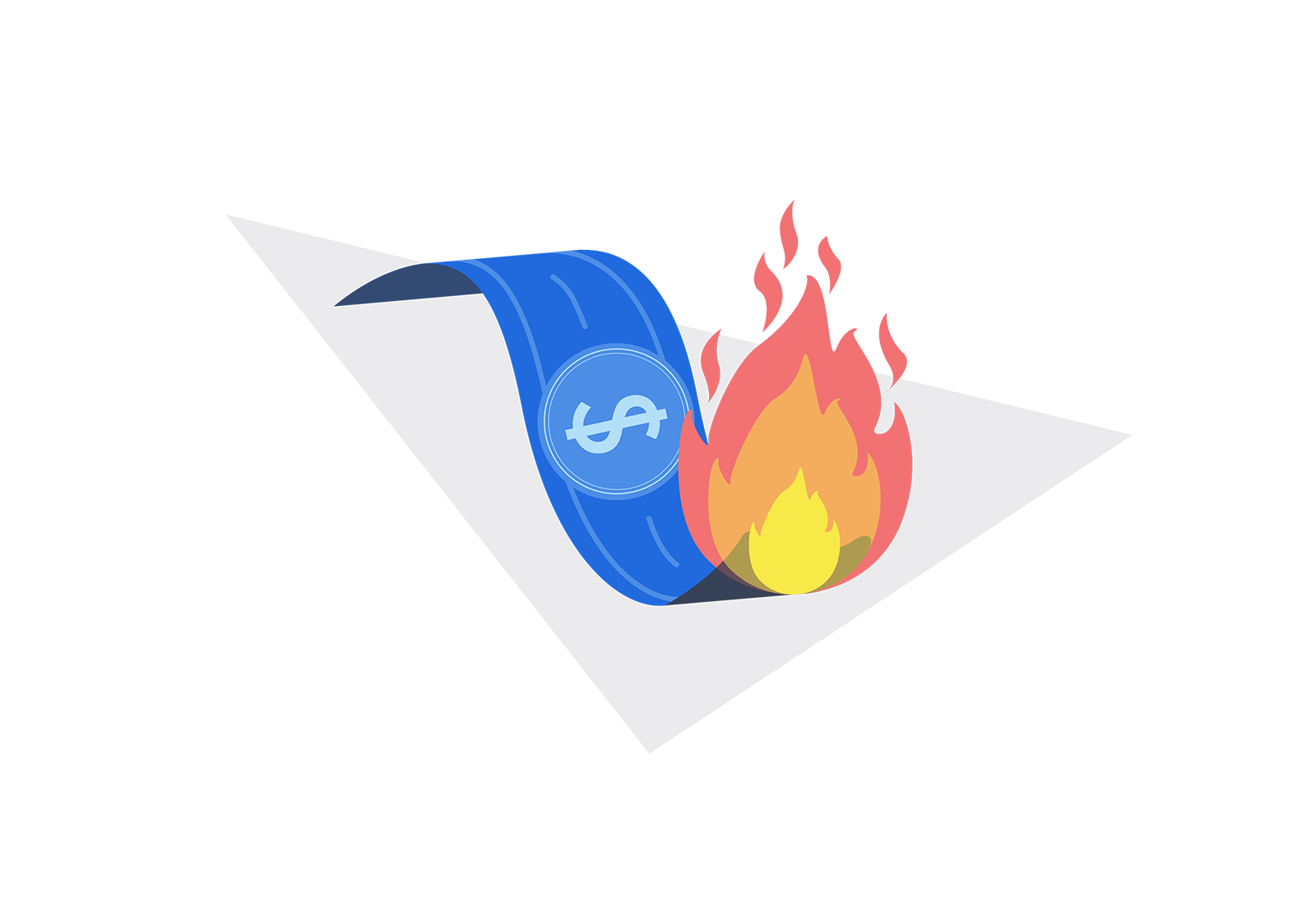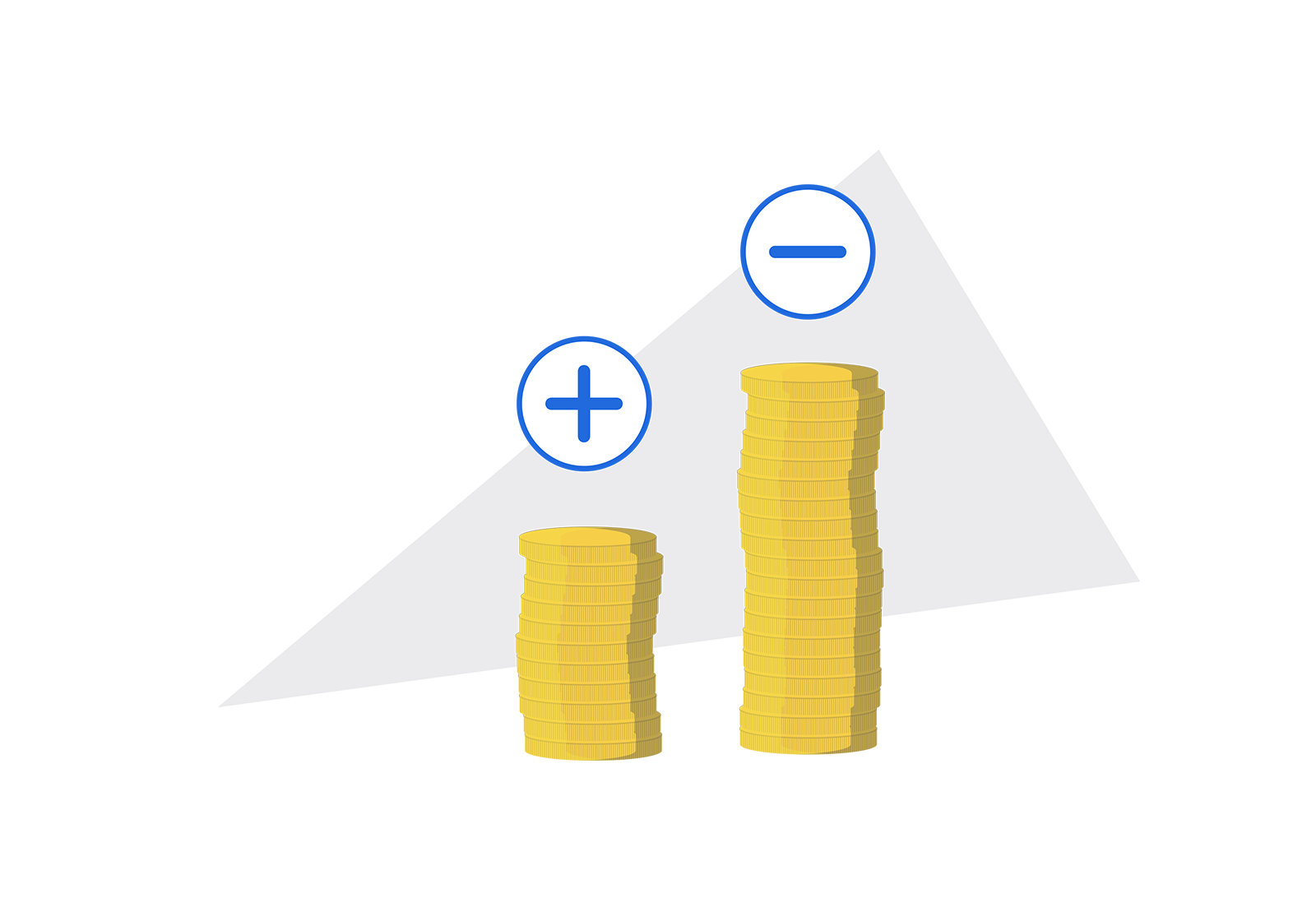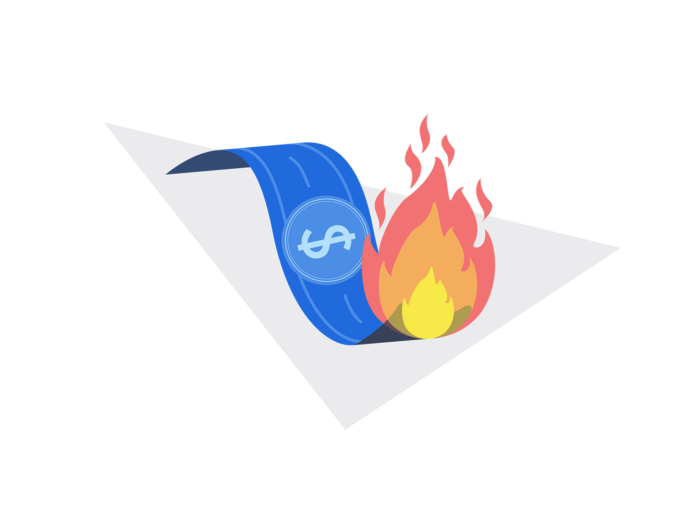As a new business owner, you know how delicately things must be balanced to ensure that you have enough cash in the company whilst you’re seeking new investment opportunities, growing your customer base and generally getting things off the ground.
You may have some venture capital for your start-up and are worried about running out of money before your business is fully established. It’s a totally normal fear for young businesses – and that’s why it’s crucial to keep on top of your start-up’s cash flow, and understand what burn rate is.
What is burn rate?
Burn rate is how quickly a business spends its cash reserves, and is a measure of negative cash flow. It’s often expressed in monetary terms. So if a business has a burn rate of £1 million, it means that it’s spending £1 million per month.
Burn rate is closely associated with cash runway. For example, if a company with a burn rate of £1m has £5m in the bank, their cash runway is just 5 months – that’s the amount of time it will take them to burn through all their cash without generating any new income.

Burn rate is an important metric for start ups, as it often takes a matter of months or years for new businesses to start generating their own income. Businesses can instead look at burn rate to understand how much cash they’re spending, and how long they can keep doing so before they hit cash flow issues.
It’s also used by investors, who’ll look at burn rate to see when a new company will likely become profitable. They may offer funding based on your burn rate, but a high burn rate will indicate that you may quickly run into financial trouble meaning that they’ll either have to set tight deadlines for your start up to meet profitability criteria, or that they’ll have to inject more money into your business.
What is negative cash flow?
Put simply, negative cash flow is when a business spends more money than is coming in during a given period. Let’s say that your business makes £10,000 in a month but your outgoings are £20,000 – that’s negative cash flow.
It’s pretty common for a start-up business. You’re likely to spend a lot of cash initially, whether on products, people, marketing materials or production, but then it’ll probably take some time to see any returns on those initial investments.

Negative cash flow isn’t necessarily a bad thing – not every business can be turning a profit month after month. However, it is something you need to keep an eye on, as consistently being in a negative cash flow position isn’t a sustainable way to run a business and could lead to insolvency. That’s why it’s so important to keep on top of what’s going in and coming out of your business – and why you need to look forward to understand what your future cash flow looks like.
What causes negative cash flow?
There are multiple ways that you might find your business has negative cash flow. Here are some of the most common causes:
- Growing too fast: As a start-up, you’ll naturally want to grow and expand your business. But if you do it too quickly, without a proper funding strategy in place, you may find that it’s unsustainable, quickly leading to a negative cash flow.
- Low profits: Another one that’s pertinent for start-ups, your negative cash flow may simply be due to low profits meaning you struggle to cover all the outgoing expenses.
- Expensive overheads: Whether you’re basing yourself in a plush co-working space, have an office that’s much bigger than you need, or are going hard on advertising, too many overheads (particularly when combined with low profits) can easily lead to negative cash flow.
- Late payments: Late payments, and even non-payments, are the bane of every business owner’s life. If you have multiple unpaid invoices, it can quickly add up.
- A lack of financial planning: Maybe your cash flow situation is simply down to poor financial planning. If you don’t keep an eye on cash coming in and out of the business, ie. don’t do cash flow forecasting, the likelihood of finding yourself in a negative cash flow is high.
How to calculate your burn rate
There are two burn rate figures to consider: net and gross. Your gross burn rate is your operating expenses – that includes rent, salaries, electricity bills and so on. Your net burn rate is the total amount of money your business loses each month.
So, if your start-up spends £2,000 a month on rent, £2,000 a month on bills, £10,000 a month on salaries, then your gross burn rate would be £14,000 per month.
If you’re not already generating any revenue, then that figure is your burn rate. But if you do have money coming into the business, then you need to remove this from the equation. If your gross burn rate is £14,000 but you make £10,000 per month, then your net burn rate is £4,000.
Net burn rate is the figure you should be interested in – and it’s what investors will be interested in, too, as it can change your cash runway. If you have £40,000 in the bank and a net burn rate of £4,000, then your cash runway is 10 months – rather than just under 3 months, which is what it would be if you looked only at gross burn rate.
Stay on top of burn rate
Keeping on top of your burn rate means keeping on top of your cash flow – and the best way to do that is with regular cash flow forecasts. Set out the amount you’re likely to spend on overheads, wages, and other operating costs, and look at the money going out month on month. Then you can add in an estimate of when you expect money to come into the business – and how much you expect it to be – so you can see how long your funds (venture capital or otherwise) will last.
Ready to get on top of your finances? Sign up to Float now and try out a cash flow forecast for yourself.

